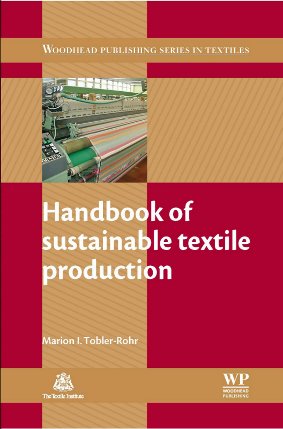Australia is a little bit like a big blank spot of knowledge as far as many of us here in Europe (and the US) are concerned.
The recently launched ‘Australian Fashion Report‘ is the first piece of work that looks very specifically at the sustainability and ethical trade practises of brands that are retailed in Australia, both local Australian as well as global brands.
How expensive is fair labour really? This article summarises selected research data to answer these questions. In short: fair labour could be had for cheap.
n the course of the last 2 years, the Greenpeace Detox campaign has repeatedly made waves.
The latest such incident happened in the context of what is possibly the world’s most relevant trade fair for performance and outdoor wear ISPO in January 2014. At that point of time, Greenpeace released news that in the water repellent coatings of jackets by some renowned brands, traces of fluorin had been identified. And that said test results had been ‘hidden’ from the public.
How expensive is fair labour really? This article summarises research data to answer these questions. In short: fair labour could be had for cheap.
The textile supply and production chain is complex. With this in mind, the ‘Handbook of sustainable textile production‘ is a unique resources: bit fosters knowledge acquisition across the different disciplines and specialities in the textile production chain, it prepares the ground for a factual, holistic discourse, and dissemination of best practise.
Last week I had the opportunity to speak at Sustainable Brands Istanbul about the risks and opportunities related to sustainability for textile and fashion businesses. Turkey is a key global producers of textile and garments and the export of these products account for roughly 20% of the country’s overall exports.
Uncertainty is widespread in the cotton market: Textile Exchange published organic cotton production figures. The current Farm & Fiber Report shows a drastic decrease. Simon Ferrigno on the current developments of the organic cotton sector and about his predictions for the future of the eco fashion market.
This current post is looking at supply chain risk in the light of the Europe wide ‘Horse meat’ scandal. It remains to be said that the results found so far not only suggest that undeclared horse meat found its way into cheap and low quality, possibly prepared meals. But that there is a much more general, and widely spread problem with meats of different types ending undeclared on the shelves for consumption.
Parents complain about the prices of school uniforms. Yet - are they also considering that too cheap a price may actually ... get them school uniforms for their children, made by children of that same age?
Supply chain transparency is – as it happens – among the prime concerns of investors when considering their risk. The news is though, that it really isn’t any news at all. Supply chain transparency has been called for for at least a couple of decades – for reasons that are entirely aligned with profitability, customer service, competitive advantage, product quality and so on and so forth.
In this article a very brief run down of the main varieties of ‘better’ cotton that exist: Cotton made in Africa, Better Cotton Initiative, Organic and Fairtrade cotton, and 2 more generic good practise farming systems.
The Spitalfields taylors Alexander Boyd is London's last shirt maker. All their shirts are made at the Rayner and Sturges factory in Kent. Impressions from the factory, and the 'making of' a bespoke Savile Row shirt.
Panipat is an ancient and historic city in the Panipat district, state of Haryana, India. The city is the global centre of “Shoddy Yarn”. It is a business that is worth 1 billion dollars world wide. 85% of the volume is for the domestic marketm 15% for export. But the industry has more shadows then there is light ...
Khadi is an Indian fabric par excellence. Hand-made from start to finish it has for centuries been the livelihood of rural communities. But the industry is in decline. Interview with Shailini Seth-Amin, CEO of MoralFibres, a company set to re-invent Khadi.
In Medieval times the location of a tannery was heavily based on the requirements of a nearby river or stream, cattle which could supply the hide, and of course oak trees which would supply the bark needed for the tanning process. In the present, because of the demand for luxury at the cheapest possible prices, the industry is pushed out to where it is easier to ignore the moral and environmental reek.
In 2012, we have seen risk management and sustainability play a more important part in the agendas of leading fashion brands. Nevertheless, many companies still perform poorly at many stages of their supply chain and are unaware of the risks, particularly if they lie beyond their direct operations.
The following are the the main trends we see happening in the near and mid future. A few exist already but will become substantially more pronounced; others are just about to emerge and hit the surface of public awareness.
The second Future Fabrics Expo was hosted at the London College of Fashion on November 7th – 9th 2013, and was attended by a rather large number designers, buyers and students. Roughly 650 fabrics with a reduced environmental impact stemming from around 50 textile mills world-wide, were showcased, along with inspirational and/or interactive videos and information panels.
In the luxury segment, production focuses on highly complex garments and low order volumes that might involve just five pieces per style which makes sourcing very challenging. The approach currently pursued by European high-end apparel brands to address the problem is that of ‘High End Fashion Cluster‘.
In a recently published consumer study 52% percent of U.K., U.S. and Canadian consumers believe that businesses’ alignments with social...
With Sao Paulo Fashion Week just closed I am here to write (again) about Brazilian fashion.
This time it is about an interesting project I got to know of personally, Projeto Contem, a private and independent initiative.
Projeto Contem is both a brand and a network of entrepreneurs working in textile and fashion as well as in food, beauty, design, arts, music and cinema.



